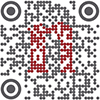| |||||
| |||||
| Hello Nature readers, | |||||
 | |||||
| The system, developed by a team led by Google scientists, is called Health Acoustic Representations (HeAR) (Getty) | |||||
The tell-tale coughA machine-learning tool shows promise for detecting COVID-19 and tuberculosis from a person's cough. While previous tools used medically annotated data, this model was trained on more than 300 million clips of coughing, breathing and throat clearing from YouTube videos. Although it's too early to tell whether this will become a commercial product, "there's an immense potential not only for diagnosis, but also for screening" and monitoring, says laryngologist Yael Bensoussan. Nature | 5 min readReference: arXiv preprint (not peer reviewed) | |||||
When like-charged particles attractEveryone knows that usually, when it comes to charged particles, opposites attract. But in liquids, birds of a feather can flock together. Researchers investigating the long-standing mystery of why like-charged particles in solution can be drawn to each other have found that the nature of the solvent is key. The way that the liquid molecules arrange themselves around the particles can generate enough 'electrosolvation force' to overcome electromagnetic repulsion. The findings might require "a major re-calibration of basic principles that we believe govern the interaction of molecules and particles, and that we encounter at an early stage in our schooling," says physical chemist and co-author Madhavi Krishnan. Physics World | 6 min readReference: Nature Nanotechnology paper | |||||
Social media changes; debates don'tA study of 34 years of online discussions from Usenet to YouTube shows that, when it comes to rude behaviour, people — not platforms — are the root of incivility. Researchers used Google's artificial-intelligence (AI) 'toxicity classifier' to identify "rude, disrespectful or unreasonable" comments. They found that over three decades, longer discussions tend to be more toxic, but heated debates don't necessarily escalate or drive away participants. "Despite changes in social media and social norms over time, certain human behaviours persist, including toxicity," says data scientist and co-author Walter Quattrociocchi. El País | 3 min readReference: Nature paper | |||||
| |||||
| |||||
| |||||
The largest mouse-embryo atlasA massive mouse-embryo map tracks the development of more than 12 million cells as they mature into organs and other tissues. Building these cell atlases typically requires multinational collaborations and lots of cash. But this one was completed in one year by a three-researcher team on a US$370,000 budget. Among the first insights from the data is that the transcriptome (the cells' set of messenger RNA) changes most dramatically in the hour just after birth: it's "the most stressful moment in your life", says geneticist and atlas co-creator Jay Shendure. Nature | 6 min readReference: Nature paper | |||||
 | |||||
ACCESS NATURE AND 54 OTHER NATURE JOURNALS Nature+ is our most affordable 30-day subscription, giving you online access to a wide range of specialist Nature Portfolio journals, including Nature. Nature+ is for personal use and is suitable for students. | |||||
Futures: The warfighterA casualty of faster-than-light travel and a teenage remnant of Homo sapiens grapple over whether it was all worth it in the latest short story for Nature's Futures series. Nature | 6 min read | |||||
Podcast: the bird song X factorSong differences too subtle for people to hear are the special spice that make some male zebra finches (Taeniopygia guttata) particularly attractive to females. Researchers used an AI algorithm to analyze various acoustic features and create maps of the songs' syllables. Female finches preferred songs with wider statistical gaps on these maps — they seem to be harder to learn and therefore indicate the singer's fitness. How this statistical distance translates into sonic quality isn't clear yet. "They all sounded like just a regular learned zebra finch on to our ear," says neuroscientist and study co-author Todd Roberts. Nature Podcast | 30 min listenSubscribe to the Nature Podcast on Apple Podcasts, Google Podcasts or Spotify, or use the RSS feed. | |||||
 | |||||
| |||||
Quote of the day"Some people hide behind jargon because they don't necessarily feel comfortable trying to explain it."Biophysicist Esther Osarfo-Mensah says that using AI to help produce summaries of papers might help disseminate research to non-specialists. (Nature Index | 7 min read) | |||||
| | |||||
| |||||
| | |||||
| Want more? Update your preferences to sign up to our other free Nature Briefing newsletters:
| |||||
| |||||
| You received this newsletter because you subscribed with the email address: manojdole1.Lens@blogger.com Please add briefing@nature.com to your address book. Enjoying this newsletter? You can use this form to recommend it to a friend or colleague — thank you! Had enough? To unsubscribe from this Briefing, but keep receiving your other Nature Briefing newsletters, please update your subscription preferences. To stop all Nature Briefing emails forever, click here to remove your personal data from our system. Fancy a bit of a read? View our privacy policy. Forwarded by a friend? Get the Briefing straight to your inbox: subscribe for free. Want to master time management, protect your mental health and brush up on your skills? Sign up for our free short e-mail series for working scientists, Back to the lab. Get more from Nature: Register for free on nature.com to sign up for other newsletters specific to your field and email alerts from Nature Research journals. Would you like to read the Briefing in other languages? 关注Nature Portfolio官方微信订阅号,每周二为您推送Nature Briefing精选中文内容——自然每周简报。 Nature | The Springer Nature Campus, 4 Crinan Street, London, N1 9XW, United Kingdom Nature Research, part of Springer Nature. |
What matters in science | View this email in your browser Monday 11 December 2023 Hello Nature readers, Today, we gaze at what might be the largest known protein, learn about the first global deal on limiting emissions from food production and discover how publishing pressures create unusually prolific authors. A structure prediction for a massive protein discovered by computational biologist Jacob West-Roberts and his colleagues. (West-Roberts, J. et al./bioRxiv ) Not...




Comments
Post a Comment